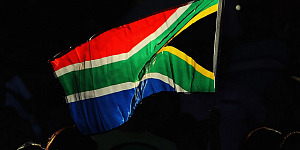South Africa's central bank left its benchmark repurchase rate steady at 7.0 percent, as expected, citing an improvement in the outlook for inflation and a weak outlook for the economy.
Although the South African Reserve Bank (SARB) - which has raised its rate by 200 basis points since January 2014, including 75 basis points this year - is still concerned about inflation, it added that its monetary policy committee "may be close to the end of the tightening cycle" if forecasts hold.
The bank's policy committee was unanimous in its policy decision and said it considers the risks to its inflation forecast to be "more or less balanced," with the rand's exchange rate, which is currently stronger than expected, moderating risks to inflation.
However, SARB added that some of the factors helping the rand may be temporary and it remains vulnerable to domestic and external shocks.
Despite improved economic growth in the second quarter, SARB said the outlook remains constrained with the risks to its outlook broadly balanced as risks stem from global conditions, the implementation of structural reforms, business and consumer confidence.
South Africa's Gross Domestic Product was up by an annual 0.6 percent in the second quarter, rebounding from a 0.1 percent contraction in the first quarter.
The central bank raised its forecast for growth this year to average 0.4 percent, up from zero percent previously forecast, and the 2017 forecast to 1.2 percent from 1.1 percent. For 2018 SARB is expecting growth of 1.6 percent, up from 1.5 percent.
SARB lowered its outlook for inflation to average 6.4 percent this year, down from 6.6 percent previously forecast, with a peak of 6.7 percent being reached in the fourth quarter of this year, down from a previous forecast of a peak of 7.1 percent.
Inflation is now seen returning to SARB's 3-6 percent target range in the second quarter of 2017 and average 5.8 percent that year, down from the previous forecast of 6.0 percent. For 2018 inflation is seen declining further to an unchanged 5.5 percent.
South Africa's inflation rate eased to 5.9 percent in August from 6.0 percent in July, just below the central bank's upper limit of 6 percent.
After depreciating from mid-2011 to January this year, the rand has trended higher on general optimism about emerging markets but has been volatile, buffeted by domestic political turmoil.
Earlier this month Lesetja Kganyago, SARB governor, said the dispute between the finance minster and a police unit was creating uncertainty that wasn't "helping the rand," and he was concerned that this volatility could feed into inflation.
Today the rand was trading at 13.48 to the U.S. dollar, up from 16.9 seen on Jan. 17 and 15 percent higher than a rate of 15.5 at the start of the year.






































